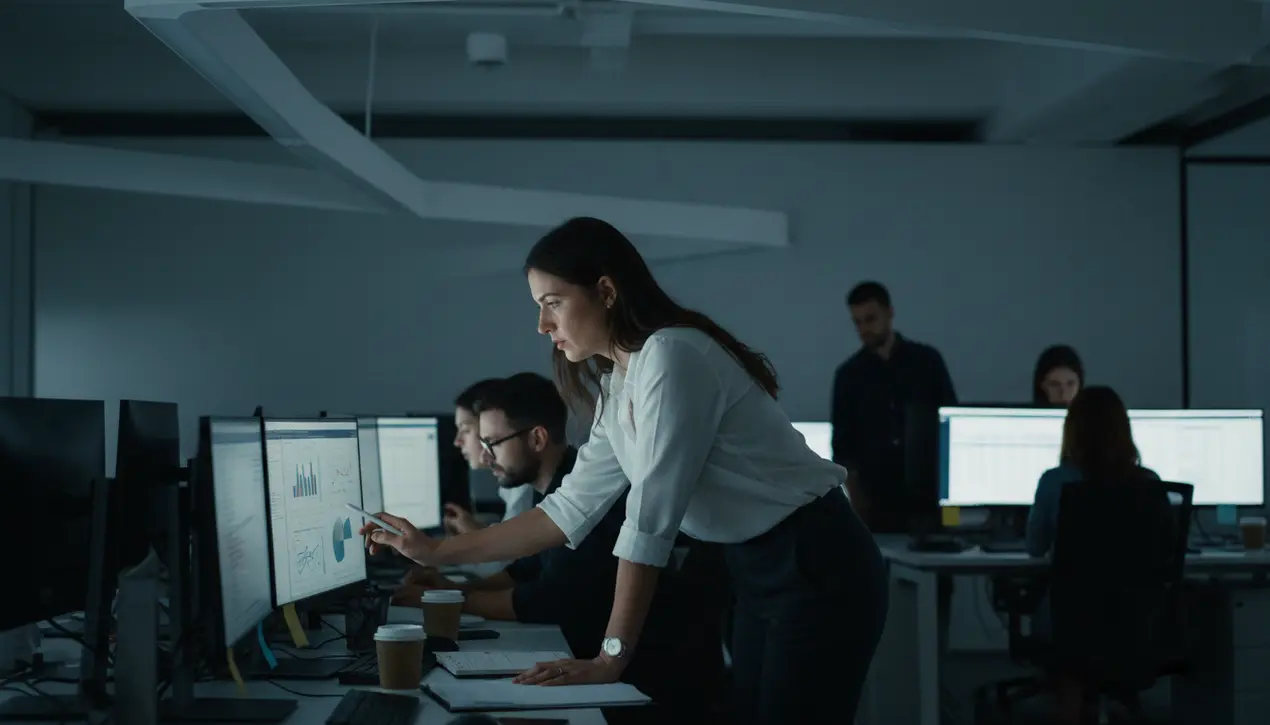
AIenterprise aiAI in Finance and Banking
The Unseen Workforce: How AI Creates a New Layer of Human Labor
MI
Michael Ross
5 hours ago7 min read2 comments
The common narrative of AI as a simple job-replacement engine is dangerously misleading. The true transformation is the emergence of a sophisticated, often hidden, layer of human work focused on supervision, correction, and ethical oversight.This mirrors historical technological shifts; the advent of enterprise resource planning systems, for instance, promised efficiency but spawned years of 'shadow work' dedicated to fixing integration errors and data mismatches. AI is replicating this pattern, but at a far more complex, cognitive level.When an AI generates a report, the human task is not eliminated—it is transformed. A person must now verify the accuracy of its claims, scrub the output for bias, and rewrite sections that lack nuance or sound artificial.This is the central paradox of advanced automation: the more intelligent the system, the more diligent human oversight it requires to function as intended. A recent McKinsey report identifies this as 'the age of superagency,' where human effort pivots from direct task execution to the management of intelligent agents.This shift is occurring rapidly and often covertly. Investigations indicate that over half of employees are already using AI tools without managerial knowledge, frequently employing consumer-grade chatbots that carry significant compliance and data privacy risks.This clandestine activity creates a silent, ungoverned workforce where sensitive corporate data can be inadvertently exposed to servers in jurisdictions with conflicting privacy laws, shattering data governance frameworks. The result is a critical organizational paradox: while individual employees may feel more capable, the institution becomes collectively less intelligent as valuable insights are trapped in isolated, personal chat histories.This hidden labor manifests in three essential forms: the verification work of checking for correctness, the correction work of editing and sanitizing content, and the interpretive work of contextualizing the machine's output for human use. These tasks are rarely tracked or measured, yet they consume immense mental energy, which explains why tangible productivity gains often lag behind the hype.The ethical implications are profound. Invisible labor has historically been a feature of care and service work; AI now extends this dynamic into the cognitive domain.If we fail to recognize the human vigilance required to keep AI credible and aligned, we risk creating a new inequality where system designers are celebrated, while the workers who tirelessly correct their errors remain unseen and undervalued. This is not merely a technical issue but a core governance challenge.Leadership must evolve from managing people to orchestrating human-system collaboration, establishing principles such as 'authorized intelligence only,' where employees are provided with secure, enterprise-grade tools, and 'transparency by design,' where any AI-assisted output is clearly labeled. We are entering the era of cognitive supervision, a new core human competency involving the ability to guide, critique, and interpret machine reasoning.The most forward-thinking organizations understand that the critical investment is not in the AI tools themselves, but in cultivating this AI literacy across their entire workforce. The quiet revolution of AI in the workplace is not about a cinematic machine takeover; it is about the pervasive, silent integration of systems that depend on a growing substratum of human effort to remain ethical, explainable, and trustworthy. The most dangerous form of AI is not the one that replaces people, but the one that covertly depends on them without permission, oversight, or acknowledgment.
#AI integration
#hidden human labor
#enterprise governance
#data security
#cognitive supervision
#editorial picks news
Stay Informed. Act Smarter.
Get weekly highlights, major headlines, and expert insights — then put your knowledge to work in our live prediction markets.
Related News
Comments
Loading comments...
© 2025 Outpoll Service LTD. All rights reserved.